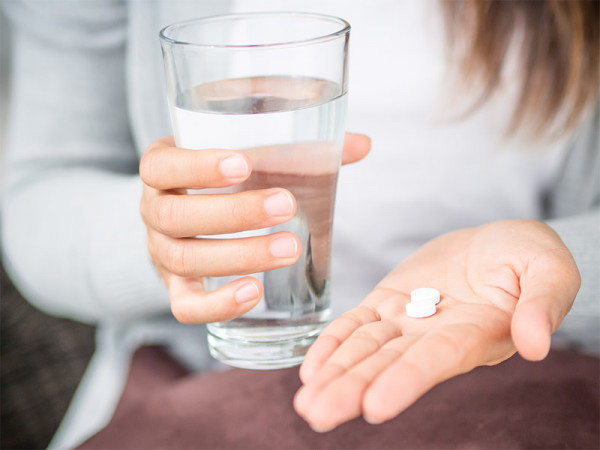The terms bioavailability and bioactivity are certainly not familiar to everyone. However, it is worth familiarising yourself with them - especially if you regularly take medication or food supplements. We explain what this means and how important it is that food supplements are bioavailable or bioactive.
What is bioavailability?
Bioavailability describes what percentage of a nutrient or active ingredient actually reaches the organism and can have an effect there.
To measure bioavailability, a blood sample is taken. This is then checked to see what amount of active ingredient is present in the blood at what time. Of particular interest is the highest concentration of the active ingredient found.
The higher the measured active ingredient quantity in the blood, the better the bioavailability. It is specified as a percentage. If something is 100% bioavailable, this means that the body can ideally absorb the nutrient (in the case of food supplements or foods) or active ingredient (in the case of drugs).
High bioavailability is important
When we take food supplements or medicines, we naturally want them to work. This is only possible with high bioavailability.
It is not enough to take a tablet, capsule or powder and assume that the body is then sufficiently supplied. The drug or food supplement must also be particularly bioavailable. Otherwise the preparation will remain ineffective - it cannot be completely absorbed and resorbed by the body and is therefore not available at the site of action (e.g. heart or muscles). Therefore always prefer high-quality preparations with a high bioavailability.
Simply taking more instead does not help either. More important (and healthier) than a high dose is bioavailability.
How well you take a preparation also depends on other factors:
- how healthy our intestinal flora is (some nutrients have to be broken down first)
- which medications or dietary supplements you take in addition
- how long you chew your food (when you take in nutrients through food)
- which foods you combine
Increase (self) bioavailability
It is also up to you to improve the bioavailability of food, medicines or food supplements. Always pay attention to what else you are currently consuming: What drugs, what food supplements, what food?
You should avoid these combinations:
- Coffee can reduce the bioavailability of some nutrients (always drink water rather than coffee when taking your medicines or food supplements).
- The effect of a medicine can be increased or decreased if you take fruit juices, goji berries, St. John's wort, ginseng or ginkgo at the same time.
- Zinc and iron hinder each other in their absorption in the body.
- Calcium and magnesium also worsen the bioavailability of the other.
- Oxalates become "calcium predators" and also reduce the absorption of iron and magnesium. Oxalates are found in particularly high concentrations in leafy vegetables such as chard, rhubarb, spinach and sorrel as well as in tea, cocoa and amaranth. By heating the food it is possible to reduce the oxalic acid significantly.
- Phytates (also called phytic acid) are also "calcium predators" and minimize the absorption of certain minerals such as zinc. Corn, beans, lentils, soya and the bran of wheat, barley and rye contain a lot of phytates.
These combinations improve bioavailability:
- The fat-soluble vitamin D3 (also present in carrots) has to be combined and dissolved with oils in order to unfold its effects and benefits for our body.
- The other fat-soluble vitamins A, E and K, are also not bioavailable if we do not take them up with fats.
- Calcium is better absorbed with vitamin D.
- Iron is better absorbed with vitamin C.
Bioactivity: What does that mean?
When we talk about the bioactivity of a drug, a food supplement or a food, we mean the influence of a substance on the living organism.
There are said to be more than 10,000 of these bioactive substances that are valuable for human health. They are mainly found in secondary plant substances, fibres or substances from fermented foods such as yoghurt or sauerkraut.
The term "bioactive form" is much more interesting for us. There are bioactive and less bioactive forms of nutrients.
Vitamin B12, for example, has three bioactive forms (methylcobalamin, hydroxocobalamin and adenosylcobalamin), which are well utilised by the body. And there is another form of B12: cyanocobalamin. This is produced cheaply and is unfortunately less bioactive.
If you want to buy a B12 supplement, it is better not to take a preparation that contains cyanocobalamin. Rely on the effective forms adenosylcobalamin, hydroxocobalamin, or methylcobalamin. For example, Vitamaze's vegan vitamin B12 tablets contain high-quality, bioactive methylcobalamin.
There are also bioactive and less bioactive forms of other vitamins and minerals. It is therefore worth taking a close look at the ingredients before you decide on a dietary supplement.
This might also interest you
-
Nutrient deficiency: causes, symptoms and treatment
We show you which nutrient deficiencies are particularly common, which symptoms occur and how you can replenish your nutrient storage. -
Seasonal vegetables and fruit: 4 reasons to eat with the season
Much is available all year round: Strawberries and blueberries are available when we feel like it. It's nice and comfortable and we don't have to give anything up. Or do we? -
Vitamin D deficiency: The special vitamin
80% of the population suffer from a vitamin D deficiency - especially in winter. Learn all about the causes, symptoms and treatment of vitamin D deficiency.
Picture: istockphoto.com | spukkato











